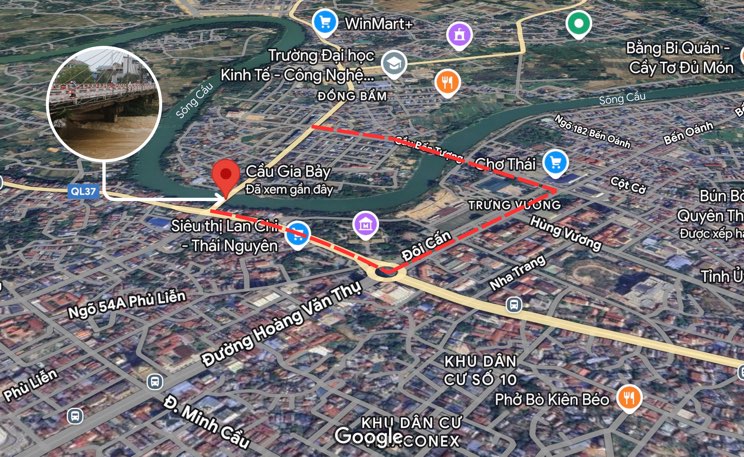The circulation of storm No. 11 in early October caused prolonged heavy rain, causing the water level of Cau River to rise, many areas in Thai Nguyen province were deeply flooded, seriously affecting traffic.
At Gia Bay hydrological station, the water level that exceeded alert level 3 was nearly 3m, 1m higher than the historical flood peak in 2024.


Information from the Thai Nguyen Department of Construction, the Provincial People's Committee has just issued Document 4402 approving the organization of traffic and inspection of Gia Bay Bridge (Phan Dinh Phung Ward) to serve the construction inspection and testing of load-bearing capacity.
According to the announcement, all automobiles are temporarily banned from traveling through Gia Bay Bridge from 12:00 on October 19 until the inspection results are available.
During the temporary ban, people need to proactively move through alternative routes, ensuring smooth and safe traffic.

Previously, the Department of Agriculture and Environment of Thai Nguyen province proposed prioritizing investment in the construction of a new Gia Bay bridge, 165m long and 21m wide, with a total cost of 350 billion VND to ensure traffic safety and promote socio-economic development.
The existing Gia Bay Bridge was built in 1981, spanning the Cau River on National Highway 1B, connecting Thai Nguyen with the northern mountainous provinces.
After more than 40 years of use, the project has shown signs of deterioration, the bridge surface is narrow, the elevation is low, and it is not possible to escape floods.
The total damage caused by storm No. 11 ( Matmo) is estimated at more than VND 16,920 billion.
According to the report of Deputy Minister of Agriculture and Environment Nguyen Hoang Hiep at the Government meeting on October 15, the storm has seriously affected many northern provinces.
Of which, Thai Nguyen province suffered the most damage with about VND12,200 billion, followed by Cao Bang with VND2,000 billion, Bac Ninh province with VND1,670 billion and Lang Son province with VND1,050 billion.











